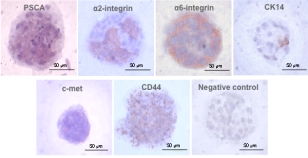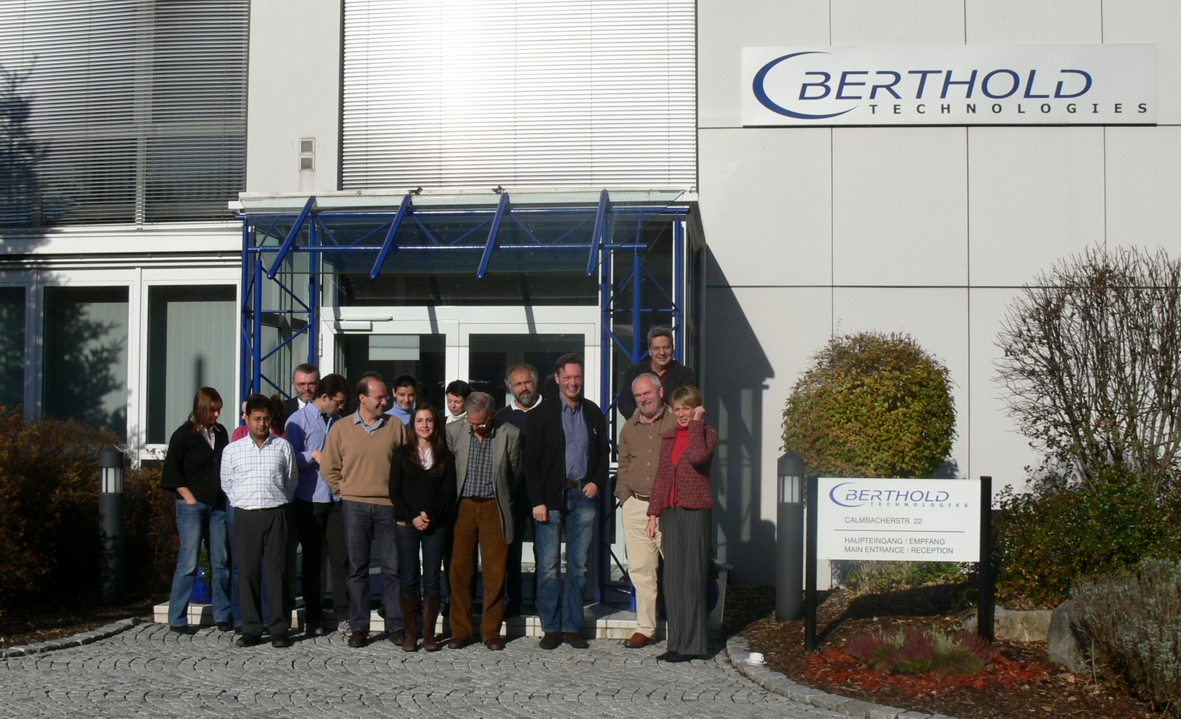promet project as a whole [click to download as pdf]
The aim of
PROMET is to elucidate the mechanisms and the signature of
minimal residual disease in prostate cancer and to develop novel
therapeutic approaches to prevent the development of minimal
residual disease to overt metastasis. In close collaboration of
basic scientists with clinical researchers the pathways of
minimal residual disease are explored using functional genomics
and expression profiling as technology platforms, advanced
experimental models of minimal residual disease using
bioluminescence, multiphoton microscopy, nanotechnology and
optoacoustic technology for detection and treatment. Innovative
imaging and therapeutic strategies developed by the industry and
selected for their potential to enhance detection and eradicate
minimal residual disease are tested in preclinical models for
subsequent clinical evaluation.
The goal is to
identify at least 2 signal transduction targets and to develop a
diagnostic test for the detection of the presence of minimal
residual disease and to define a novel therapeutic strategy for
the treatment of this disease in prostate cancer. Thus, earlier
detection and disease-specific treatment may decrease morbidity
and mortality and ultimately have an impact on socio-economical
costs.
In this targeted approach
to combat minimal residual disease in prostate cancer we will
pursue various levels at which we attack the malignant process
and validate these at a phenotypic and functional level. We will
be developing novel means of detecting and treating minimal
residual disease. By integrating a variety of state of the art
approaches, we aim at
- Identifying and validating at least 2 target genes for detection of minimal residual disease in prostate cancer
- Developing an integral in vivo model of minimal residual disease allowing the study of the mechanisms and signatures
- Evaluate the in vivo detection of minimal residual disease by means of nanoparticles and optoacoustics
- Developing a therapeutic strategy for the treatment of minimal residual disease in prostate cancer

The work of the consortium improved our understanding of
the mechanisms of minimal residual disease and has led
to the identification of a set of marker genes for the
detection of minimal residual disease. These are
currently being evaluated in retrospective clinical
sample sets and prospectively in lymph nodes of patients
undergoing radical prostatectomy. These results will be
compared to high end imaging modalities such as
diffusion weighted imaging analysis.
By means of iTRAQ proteomics 2
potential proteins of interest as potential markers have
been isolated and are currently being evaluated and
validated in different clinical sample sets.
Taken together these data the consortium has been able
to demonstrate that
differential gene and protein expression
of minimal residual disease
exists. There is
good preliminary evidence that minimal residual disease
can be recognized and possibly targeted with such marker
genes.
The development of different animal models addressing
different issues of the problem of minimal residual
disease using bioluminescence and thus significantly and
drastically decreasing the number of experimental
animals required for experiments has allowed to gain
insight into the mechanisms and the gene expression
involved. Experimental
models cover hormone-sensitive prostate
cancer and dormancy, which did not exist for prostate
cancer until now and are important additions to the
prostate cancer researchers’ armamentarium. In addition
we have established a dorsal chamber metatarsal model
for multiphoton fluorescent microscopy detection and
quantification of micrometastases in vivo allowing to
study the cellular mechanisms of homing, extravasation
and implantation.
The consortium has validated the most promising markers
in the literature. Results indicate a
dire need of novel markers
as the proposed markers did not increase prognostic and
predictive information.
In close collaboration with the industry (Fukuda Denshi)
we developed a novel
optoacoustic instrument that allows to
alternately record optoacoustic and ultrasound imaging
and improved the hardware by decreasing reconstruction
artifacts by different algorithms and displacement
compensated averaging (DCA). These proposed methods are
computationally inexpensive and make real-time imaging
possible. Furthermore, we have been able to demonstrate
that functionalized gold nanoparticles work as contrast
agent for optoacoustics. Also in collaboration with the
industry (Berthold) we have improved the sensitivity of
CCD cameras for the detection of minimal residual
disease, allowing to decrease the detection threshold to
approximately 100 cells in vivo.
Treatment of minimal residual disease is challenging as
chemotherapy aside few strategies exist. Chemotherapy
can only interfere with dividing cells. As soon as cells
are dormant or not proliferating, few options are
available. Early treatment with bisphosphonates allows
decreasing the number of metastases and the future tumor
load. Further treatment approaches are being developed.

More information under promet publications.